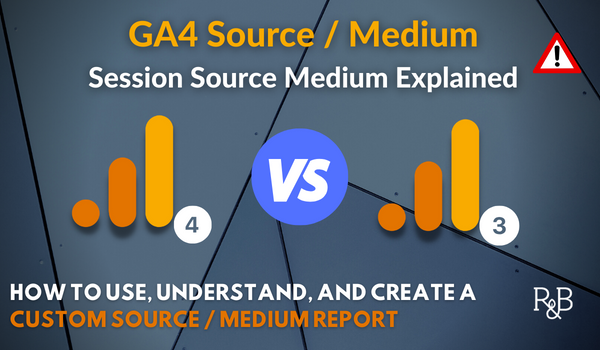Revealing the Influence of Second Dimension in Google Analytics on Information Analysis and Insights
In the realm of information analytics, the use of additional dimensions within Google Analytics has arised as a pivotal device for removing much deeper insights and unraveling complex patterns that might otherwise stay covered. By peeling off back the layers of primary data collections, secondary measurements use a nuanced point of view that improves the understanding of customer habits, website performance, and the performance of advertising strategies. Nonetheless, the true influence and untapped potential of additional dimensions are usually undervalued, eclipsed by the allure of main metrics. As we navigate through the intricate landscape of data analysis, the value of additional dimensions becomes significantly noticeable, clarifying vital information that hold the trick to notified decision-making and strategic optimizations.
Exploring the Concept of Secondary Dimensions
Secondary dimensions in Google Analytics provide additional understandings by permitting customers to assess key data in combination with an additional attribute. This function allows an extra detailed understanding of the key information by adding one more layer of information for analysis. By including second measurements, individuals can dig deeper into the information and discover useful correlations that might otherwise go undetected. By matching the main information of web site web traffic with additional measurements like demographics or habits, marketing professionals can obtain a much more extensive view of their audience and tailor their techniques accordingly.
Understanding the idea of second dimensions is crucial for optimizing the potential of Google Analytics. It enables customers to sector information successfully, recognize patterns, and make educated choices based upon a more full photo of their analytics information. By exploring the numerous additional dimensions available in Google Analytics, customers can unlock brand-new insights and maximize their digital advertising and marketing initiatives. Essentially, second measurements act as a powerful tool for enhancing information evaluation and driving workable results.
Enhancing Information Analysis With Additional Measurements
Having established the foundational understanding of secondary dimensions in Google Analytics and their pivotal role in information evaluation, the focus now changes in the direction of leveraging these additional attributes to improve the interpretation of analytics information (what is a secondary dimension in google analytics). By incorporating secondary measurements right into information analysis, experts can gain much deeper insights into individual habits, website efficiency, and advertising performance

Furthermore, secondary dimensions aid in contextualizing key information metrics by giving extra layers of details. This contextualization help in understanding the 'why' behind the data trends, aiding analysts make educated choices and optimizations to boost overall performance. Ultimately, including secondary measurements improves the data analysis process, leading to more meaningful understandings and strategic actions.
Uncovering Hidden Insights Through Secondary Measurements
Discovering the depths of analytics information with additional dimensions discloses useful insights that would certainly otherwise remain obscured. By incorporating second measurements in Google Analytics, organizations can uncover covert patterns, patterns, and relationships that give an even more thorough understanding of user habits and site efficiency. These additional layers of data permit analysts to delve much deeper right into the primary dimensions, such as website traffic sources or landing web pages, and gain an extra nuanced perspective on just how different variables connect with each other.
Via the usage of additional dimensions, experts can section and compare information throughout various try these out measurements, allowing them to determine particular factors that affect customer interaction, conversion rates, and overall success metrics. By coupling the key dimension of 'gadget group' with the second measurement of 'age group,' marketing professionals can determine which age demographics favor accessing the internet site with mobile tools versus desktop computers.
Leveraging Second Measurements for Actionable Analytics
Structure upon the understandings introduced with secondary dimensions in Google Analytics, organizations can currently harness this enriched data landscape to drive workable analytics and calculated decision-making. By leveraging secondary dimensions, companies can delve much deeper into their information to draw out valuable patterns, trends, and relationships that may have previously gone undetected. This deeper degree of analysis allows businesses to get an extra extensive understanding of user habits, project performance, and general internet site efficiency.
One trick advantage of using second dimensions for workable analytics is the ability to sector data based upon particular requirements. This division enables businesses to tailor their projects and methods to various target market groups, resulting in extra targeted and effective advertising and marketing efforts - what is a secondary dimension in google analytics. Furthermore, second measurements offer a more alternative sight of user interactions, making it possible for companies to enhance their website material, style, and total individual experience
Taking Full Advantage Of Decision-Making With Secondary Measurements
To boost calculated decision-making in analytics, leveraging secondary measurements in Google Analytics can offer an extra nuanced perspective on user behavior and campaign efficiency. By integrating additional dimensions into information analysis, services can delve much deeper into the specifics of their internet site visitors' communications and interaction patterns. This additional layer of details permits a more comprehensive understanding of just how various variables, such as demographics, tools, or website traffic resources, effect essential performance indicators.

Conclusion
Finally, the use of secondary dimensions in Google Analytics plays a crucial duty in visit this page improving data evaluation and revealing concealed understandings. By exploring this principle, one can gain a much deeper understanding of customer habits and make educated decisions based upon actionable analytics. Leveraging secondary measurements permits a more comprehensive interpretation of information and takes full advantage of the performance of decision-making procedures.
